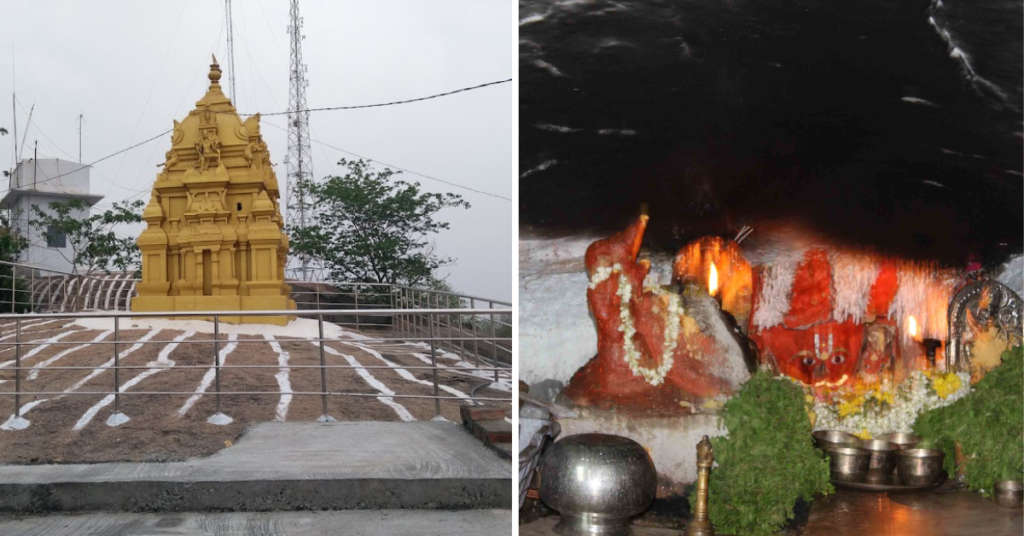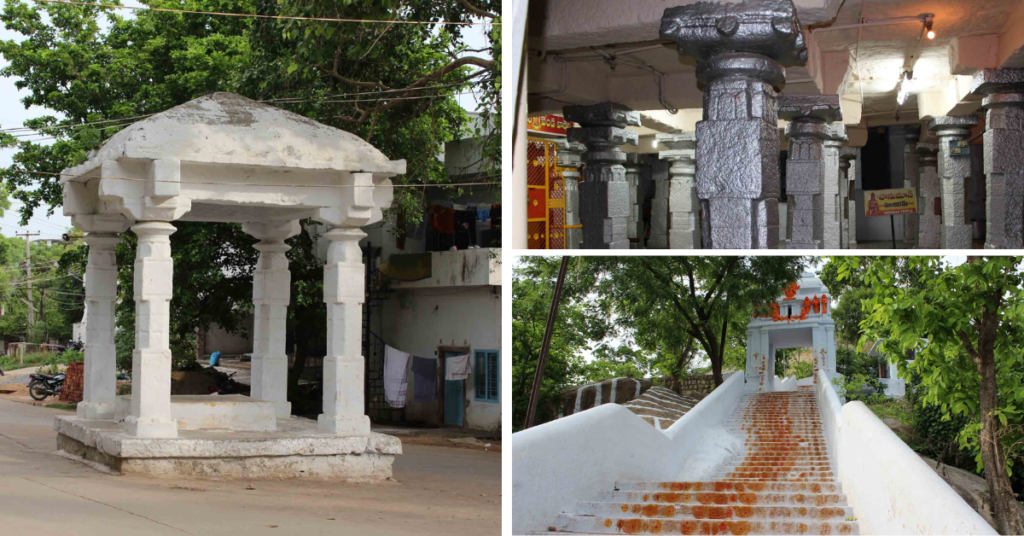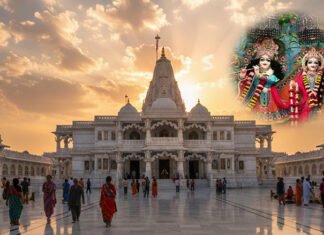Introduction
Located in Khammam, the Sri Lakshmi Narasimha Swamy Temple is a revered spiritual site with rich historical roots. Built in the 16th century by the Kakatiya rulers, this sacred temple is dedicated to Lord Lakshmi Narasimha Swamy, a powerful form of Lord Vishnu. Known for its serene atmosphere and vibrant festivals, including Rathotsava and Brahmotsavas, it attracts devotees and visitors seeking both spiritual solace and a connection to the region’s heritage. The temple is also home to sacred Badam and Gare trees, enhancing its spiritual ambiance.

Also visit: An Ultimate Guide to the Kakatiya Architecture Thousand Pillar Temple
the Temple’s History
The Sri Lakshmi Narasimha Swamy Temple stands on the sacred land where the great sage Moudgalya performed intense penance, seeking the blessings of Lord Lakshmi Narasimha Swamy. Legend has it that the Lord appeared before the sage, blessing him and making this land holy. The Kakatiya rulers, known for their devotion and architectural genius, constructed this temple in the 16th century, adding historical significance to its spiritual importance.
The Deity and Sacred Symbols
The temple is dedicated to Sri Lakshmi Narasimha Swamy, a powerful and compassionate form of Lord Vishnu. The sacred Badam and Gare trees are also revered as symbols of divine presence, enhancing the spiritual aura of the temple.
Festivals and Rituals
The temple is alive with vibrant festivals and rituals. Monthly Rathotsava celebrations on Swathi Nakshatra and the grand Brahmotsavas during Vaisakha Poornima are key events that attract devotees from all over. These celebrations are perfect for experiencing the spiritual energy of the temple.

Also visit: The Beauty of Kinnerasani Wildlife Sanctuary A Complete Guide
Exploring Nearby Attractions
While in Khammam, don’t miss the opportunity to visit Bhadrachalam, a nearby town famous for its Sri Rama Chandra Swamy Temple. Exploring these sites together offers a spiritually enriching experience, allowing visitors to immerse themselves in the region’s sacred history.
Visitor Information
- Location: The temple is located in Khammam town, about 120 km from Vijayawada.
- Nearest Airport: Vijayawada Airport.
- Nearest Railway Station: Khammam Railway Station.
- Temple Address: Sthambadri Narasimha Swamy Gutta, N.S.T Road, Khammam – 507002.
- Contact: For more information, you can reach the temple authorities at 9010782283 or 9848156001.
Why Visit?
A visit to the Sri Lakshmi Narasimha Swamy Temple in Khammam is not just about seeking blessings; it’s about connecting with the deep history and rich traditions of the region. Whether you’re a devotee or simply curious, this temple offers a peaceful and meaningful experience.
Must visit Place nearby Khammam
FAQS
ANS) The Sri Lakshmi Narasimha Swamy Temple in Khammam is built on sacred land where the sage Moudgalya performed penance to seek blessings from Lord Lakshmi Narasimha Swamy.
ANS) The temple is located in Khammam town, approximately 120 km from Vijayawada. The nearest airport is Vijayawada Airport, and the closest railway station is Khammam Railway Station
ANS) The best time to visit is during the major festivals like Brahmotsavas or Rathotsava, when the temple is most vibrant and lively.
ANS) The temple offers a unique blend of historical significance, spiritual ambiance, and architectural beauty, making it a meaningful destination for both devotees and history enthusiasts.
ANS) Yes, nearby attractions include Bhadrachalam, known for the Sri Rama Chandra Swamy Temple. Visiting these sacred sites provides a deeper understanding of the region’s spiritual heritage.











